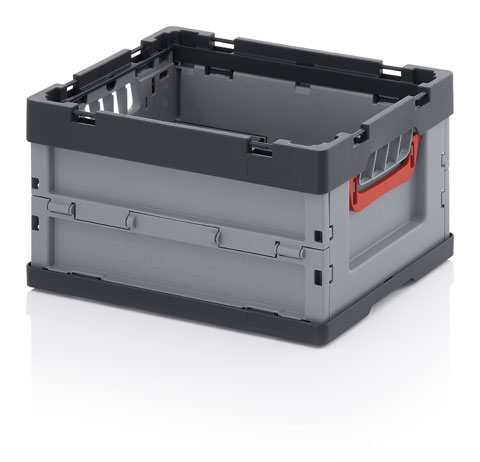Amazon Utilises Plastic Crates and Robots in Warehouse
05 Oct 2017
A huge company like Amazon ships millions of items all over the world. As a result, the firm has become an innovator in warehouse automation, and its processes use countless plastic containers that are moved around, lifted and stacked with the aid of robots. Once staff dragged these plastic bins about manually, but now their work is more likely to involve supervising these robots, which carry out most of the hard manual labour.
As a supplier of almost anything you can find online, Amazon has undergone exponential growth and required an almost never-ending supply of people to work in its warehouses. Globally, the Amazon army of workers is three times the size of that employed by Microsoft, and nearly 20 times the size of the workforce employed by Facebook. Just recently, Amazon announced that it would be setting up another hub in North America that could create up to 50,000 new jobs.

Heavy Lifting
At the same time, Amazon is also drawing on automated processes to help it satisfy the demands of customers. In 2014 Amazon started using robots to move plastic containers and carry out some of the manual work once done by human employees. To assist with integrating robots, Amazon was using machines that had been developed by a company known as Kiva Systems. Amazon purchased Kiva Systems, renaming the company Amazon Robotics. Amazon now operates in excess of 100,000 robotic devices in locations around the globe.
Incorporating robots into its processes has made moving plastic bins around much less arduous and, at the same time, a great deal more efficient. Automation makes distributing goods faster and less tedious and saves money. A commentator on the rise of automation said that Amazon would not be able to turn orders around and fulfil them at the speed and for the prices they do without the assistance of automated devices.
In practice, robots and human workers carry out tasks together in an Amazon warehouse. Robots move around with goods loaded on shelves that can weigh up to 3,000 pounds.
Less Boredom, More Focus
Hundreds of robots may be in motion at the same time without banging into each other. Humans maintain the stocks on the shelves, which when replenished are carried away by robots. When there are orders for the goods on the shelves, the robots present themselves in another area. At these stations, humans follow instructions on a computer to select the items required and place them in plastic containers which are then whisked away to the people who pack them into boxes that are sent to customers. One of the aims of the Amazon automated system is for it to manage the boring and tiring elements of moving plastic pallets and crates, and allow the human workers to focus on jobs that engage the brain. While the robots move things around, human staff are inspecting and monitoring, doing tasks are more interesting while avoiding the most physically exhausting parts of fulfilling orders. Using robots also means Amazon warehouses require less space, as aisles can be squeezed closer together when humans don’t need to access them. This increased density of goods storage means more stock can be kept in one place, with a bigger range for customers to choose from.
